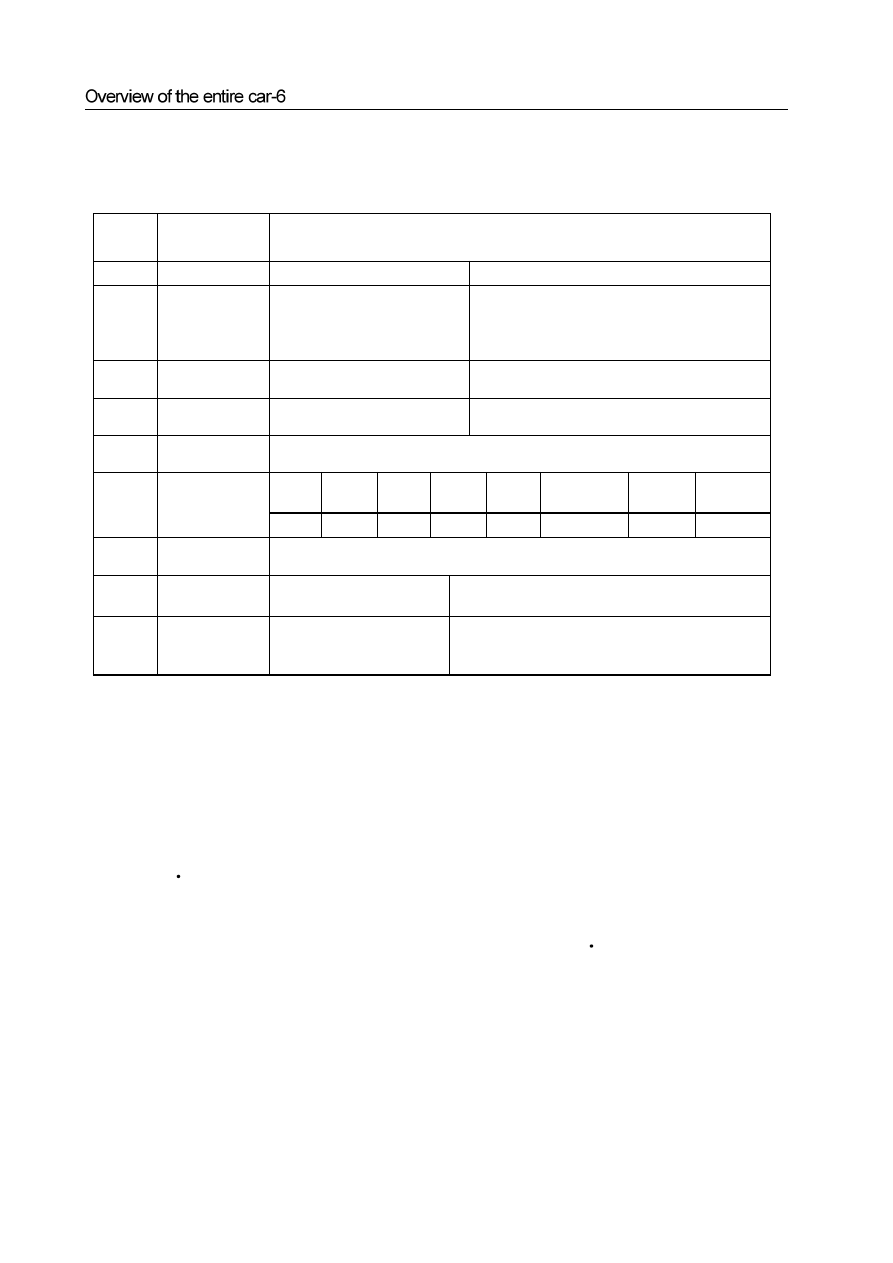Great Wall Hover. Manual - part 2

Front shaft/axle
CC6460K wagon has the two-cross arm, independent suspension, breakaway front axle.
CC6460KY wagon has the two-cross arm, independent suspension, breakaway steering drive axle , hyperbolic gear single-stage main
reducer, plain bevel gear differential mechanism, universal drive semiaxle, Birfield ball-joint, main reduction ratio i
0
=4.55, Max. input
torque is 900N
m.
Rear axle
Non-breakaway drive axle, integral stamping-welded axle housing, hyperbolic gear single-stage main reducer, plain bevel gear differential
mechanism, semi-floating semiaxle, main reduction ratio i
0
=4.55, Max. input torque is 900N
m.
Wheel and tyre
The type, specification and main parameter of wheel and tyre see Table 4.
Table 4 Type, specification and main parameter of wheel and tyre
Transmission
For the structure and main technical parameter of transmission see Table 3.
Table 3 Structure and main technical parameter
Serial
No.
Item Specification
and
parameter
1 Model
SC5M2D-C
SC5M4D-C
2 style
manual mechanical step
transmission of full synch, 5
forward steps, 1 reverse step, direct
manipulation
manual mechanical step transmission with torque
divider of full synch, 5 forward steps, 1 reverse step,
direct manipulation
3
Center
distance(mm)
72
72(transmission), 222.25 (torque divider)
4
Max. input torque
(N. m)
196
196
5
Max. input torque
(r/min)
5500
Step
I
Step
II
Step
III
Step
IV
Step
V
Step
R(Reverse)
Step
H(high)
Step
L(low)
6 Speed
ratio
7
Gear pair of
speedometer
8:25
8
Total net
weight(kg)
38 68(include
torque
divider)
9
Outline
dimension: L×W
×H
1070mm×466mm×
399mm( not include height of
steering level)
1070mm×460mm×380mm( not include height of
steering level)
Drive shaft
The structure of rear drive shaft assembly of CC6460K wagon is the three cross-axle universal joints, two drive shafts with extens
intermediate support free-maintenance segmental structure. The front and rear drive shaft assembly of CC6460KY wagon has the
universal joints, one drive shaft with extension spline, free-maintenance integral structure respectively.